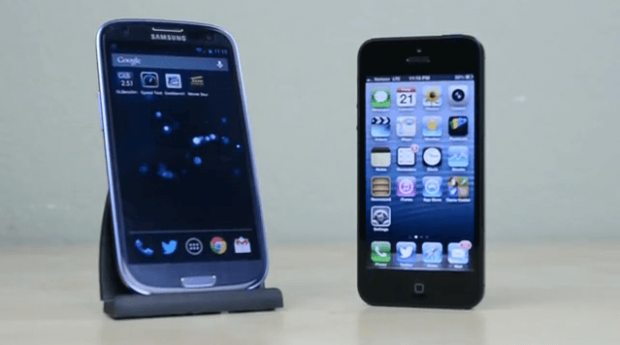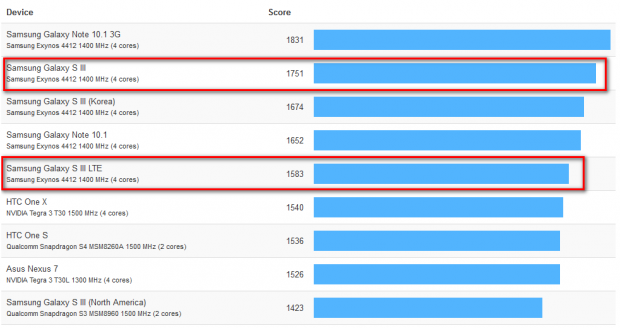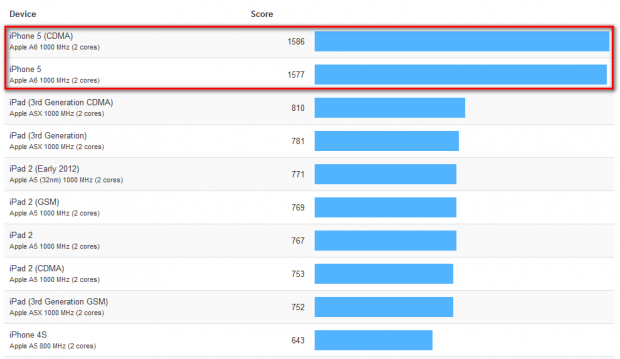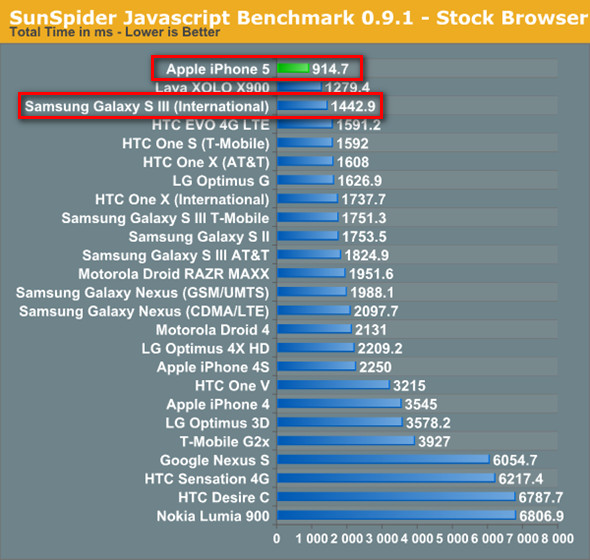iPhone 5 and Galaxy S III are the two biggest hitters in the smartphone market today. While it is somewhat futile to try to compare the two to figure for the purposes of which is faster — because both give excellent, buttery-smooth, lag-free performance — the geeks among us love benchmarks. So what do the benchmarks show — is the iPhone 5 or Galaxy S III faster? Well it depends. (Did you expect me to give you a straight answer?)
Many blogs and websites reported over the weekend that the iPhone 5 is faster than the Galaxy S III, using the following video as proof:
The three benchmarks used in the video are Geekbench, Sunspider, and GL Benchmark. Sunspider tests the JavaScript performance of a device, GL Benchmark tests the graphical power of a device, while Geekbench is an overall benchmark.
It is not surprising iPhone 5 schooled the Galaxy S III in GL Benchmark. The iPhone 5 has a triple-core PowerVR SGX 543MP3. This is the second strongest GPU in a mobile device to date, second only to the new iPad (iPad 3). With such a strong GPU, it is only logical iPhone 5 comes out on top when it comes to graphical performance. What is surprising are the other tests.
According to the Geekbench and Sunspider tests, the iPhone 5 scores more than the Galaxy S III — so it must be faster, right? Whoa, wait a second. Yes, it is true the iPhone 5 scored higher than the Galaxy S III in the above video. The catch is the above video is benchmarking the American version of the Galaxy S III. The American version of the Galaxy S III uses a dual-core Snapdragon S4 processor. If compared to the international version of the Galaxy S III (the one that uses quad-core Exynos), the iPhone 5 actually comes equal or below international Galaxy S III’s Geekbench score:
However, even against the international Galaxy S III, the iPhone 5 still has a higher Sunspider score:
Why is a dual-core phone scoring higher than a quad-core phone? The A6 processor in the iPhone 5 is a custom SoC designed by Apple. AnandTech speculates the reason iPhone 5 has such a good Sunspider score is “Apple specifically targeted improvements in the memory subsystem when designing the A6’s CPU cores”, which fixed some issues in the default Cortex A9 memory management. Aside from that, another reason is Apple has vastly improved the feed of Mobile Safari on iOS 6. The hardware advantage of a custom SoC plus an improved Safari helps iPhone 5 top other phones.
As a side note, it is interesting to note how the title of “fastest” phone bounces back between Apple and Samsung. When Apple releases its latest device, it takes the crown. When Samsung releases its latest device, it takes the crown passing up Apple. Then Apple releases its latest device only to pass Samsung. Then Samsung releases its latest device and passes Apple. It is a vicious cycle — you only get to be king until the next big thing, which is roughly six months if this pattern continues.
In the end, what does this all mean? Not much. Most, if not all, high-end devices give you excellent, lag-free performance — iPhone 5, Galaxy S III, HTC One X, etc. — regardless of which device comes out on top in benchmarks. Even for games the iPhone 5 doesn’t have much of an advantage over the competition; sure the iPhone 5 may have a better GPU but most, if not all, mobile games are unable to use the full potential of GPUs anyway — you don’t need the best to be able to run a game lag-free. However, if benchmarks are truly what are important to you, then obviously the iPhone 5 is the winner here. For now.
[via Geekbench (1) (2), AnandTech, Mashable]

 Email article
Email article







